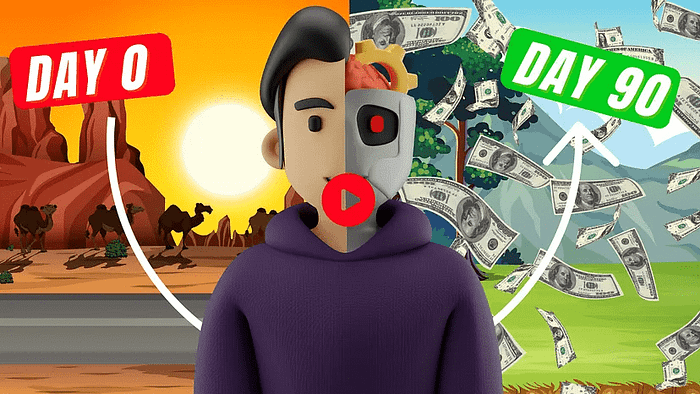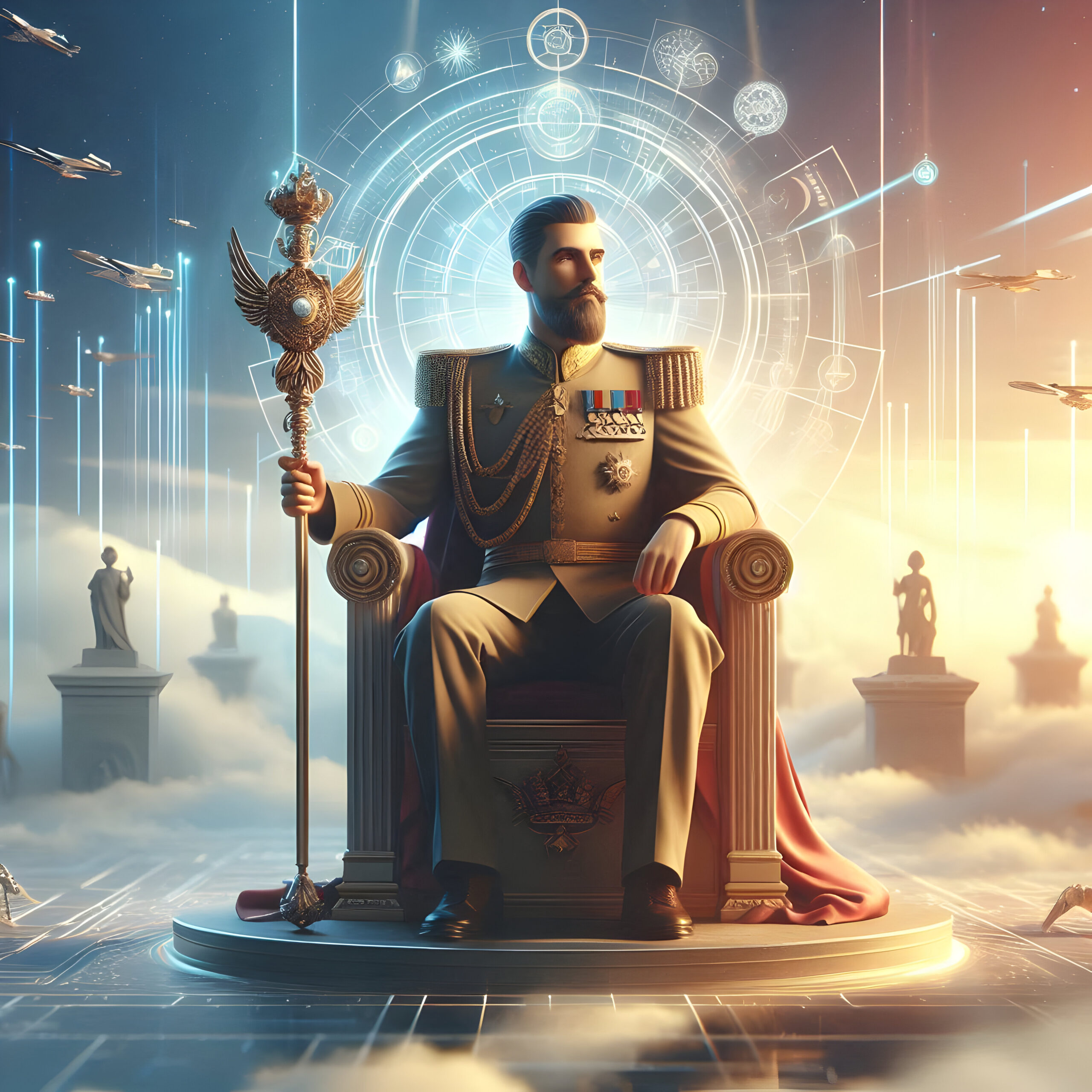From Rock Bottom to Empire: 5 Business Titans Who Conquered Failure and Built Legendary Comebacks
When adversity strikes in the business world, true business titans emerge from the ashes of their failures with remarkable resilience. These extraordinary stories of determination and grit showcase how devastating setbacks transformed into unprecedented success, offering invaluable lessons for modern entrepreneurs. From the industrial age to the digital era, these business titans redefined what it means to overcome catastrophic failure.
We strongly recommend that you check out our guide on how to take advantage of AI in today’s passive income economy.
Table of Contents
5. The Revolutionary Vision of Henry Ford: Democratizing Transportation
In 1899, when automobiles remained exclusive playthings of the wealthy, a visionary business titan named Henry Ford harbored an audacious dream. Despite his humble beginnings as a talented mechanic, Ford envisioned a future where ordinary Americans could afford automobiles. His initial venture, funded by eager investors, crumbled under the weight of conflicting visions. While Ford sought to create reliable, affordable vehicles for the middle class, his investors pushed for luxury automobiles targeting affluent collectors.
The misalignment resulted in rushed production, compromised quality, and ultimately, the company’s demise within twenty-four months. Undeterred, this resilient business titan redirected his energy toward the emerging racing circuit. In this high-stakes arena, Ford’s engineering brilliance shone through, as his vehicles consistently outperformed competitors. His success in racing attracted new investors, leading to a second entrepreneurial attempt that ironically reversed the previous scenario – now Ford wanted to build racing cars while investors sought affordable vehicles.
The Birth of an Automotive Empire: Model T Revolution
The year 1903 marked a pivotal moment when this determined business titan established the Ford Motor Company. Learning from past failures, Ford ensured complete alignment with his investors regarding the company’s mission – creating affordable transportation for the masses. The Model A, priced at $750, represented their initial offering, but Ford’s revolutionary assembly line production methods would soon transform the industry forever.
The introduction of the Model T revolutionized not just transportation but American society itself. Through continuous innovation in manufacturing processes, Ford achieved the unprecedented feat of reducing the Model T’s price to $260. This price point made automobile ownership accessible to average Americans for the first time in history. The impact was so profound that the Model T claimed over half the global automotive market share, with production exceeding 15 million units.
4. Walt Disney: The Artistic Vision That Changed Entertainment
Among distinguished business titans who faced devastating setbacks, Walt Disney’s journey stands as a masterclass in creative persistence. In 1926, as an ambitious young cartoonist, Disney developed groundbreaking techniques that merged animation with live-action film. This innovation led to “Alice’s Wonderland,” representing his first major breakthrough in the entertainment industry. However, success proved fleeting when unrealistic production deadlines triggered a mass departure of his entire animation team.
The situation worsened when Disney discovered he had inadvertently signed away the rights to his creation. Forced to relocate and start anew, this determined business titan found inspiration in an unexpected moment – during a simple train journey where Mickey Mouse was born. This setback, while devastating, forced Disney to innovate and create even more ambitious projects.
The Magic of Persistence: Revolutionizing Animation
Disney’s resilience manifested in the creation of “Steamboat Willie,” the first cartoon featuring synchronized sound. This technological breakthrough led to a series of innovations, including the first color cartoons, earning him critical acclaim and an Academy Award. However, Disney’s grandest vision – producing feature-length animated films – faced widespread skepticism from industry experts who believed audiences wouldn’t sit through long animated features.
Against mounting financial pressures and industry doubts, this visionary business titan remained steadfast in his belief that animation could tell compelling stories. The 1937 release of “Snow White and the Seven Dwarfs” not only silenced critics but revolutionized entertainment forever. The film’s success validated Disney’s unwavering faith in animation as a serious art form and established the foundation for a global entertainment empire.
3. Ray Dalio: Transforming Investment Philosophy Through Failure
The remarkable journey of business titan Ray Dalio illustrates how catastrophic failure can spark revolutionary innovation in financial management. Beginning in 1982, Dalio launched Bridgewater Associates from his modest New York apartment, quickly establishing himself as a forward-thinking analyst. His unique approach to market analysis, focusing on broad economic patterns rather than individual securities, attracted prestigious clients including McDonald’s and the World Bank.
Success, however, bred overconfidence. In a defining moment of hubris, this ambitious business titan made a bold, public prediction about an imminent U.S. recession. When markets instead embarked on a prolonged bull run, Bridgewater’s investment portfolio suffered devastating losses. The situation deteriorated rapidly, forcing Dalio to lay off his entire staff and seek financial assistance from his father – a humbling experience for someone who had prided himself on market foresight.
The Power of Radical Transparency: Reimagining Corporate Culture
From the ashes of near-bankruptcy, Dalio engineered perhaps the most innovative comeback in investment management history. This business titan’s epiphany centered on a revolutionary concept: radical transparency. Rather than maintaining traditional hierarchical structures where junior employees feared challenging leadership, Dalio created an environment where constructive disagreement became not just acceptable but mandatory.
This transformation went beyond superficial changes, embedding sophisticated feedback systems throughout Bridgewater’s operations. Every meeting was recorded and analyzed, allowing team members to study decision-making processes and learn from both successes and failures. This unprecedented approach to organizational transparency attracted skepticism initially, but its effectiveness became undeniable during the 2002 market downturn.
Building the World’s Largest Hedge Fund
While other investment firms struggled with a 22% market decline, Bridgewater’s diversified approach and transparent decision-making process helped maintain remarkable stability. This success attracted major institutional investors, including pension funds and sovereign wealth funds, propelling Bridgewater to become the world’s largest hedge fund. Dalio’s transformation from a failed prognosticator to a pioneering business titan demonstrated how embracing failure could lead to revolutionary innovation.
2. Steve Jobs: Silicon Valley’s Greatest Comeback Story
The epic tale of business titan Steve Jobs encompasses perhaps the most dramatic fall and rise in corporate history. After being forcibly removed from Apple in 1985, Jobs faced not just professional humiliation but the loss of his identity as the face of personal computing innovation. Rather than retreating into comfortable retirement, Jobs channeled his creative energy into two new ventures: NeXT Computer and Pixar.
NeXT, while struggling to find market success, became an unofficial laboratory for Jobs to refine his leadership skills. The absence of corporate oversight forced this determined business titan to confront his management shortcomings directly. Meanwhile, his acquisition of Pixar from Lucasfilm demonstrated evolving business acumen, as he transformed a struggling computer hardware company into an animation powerhouse.
The Intersection of Technology and Storytelling
Jobs’ investment in Pixar reflected his growing understanding that technology alone couldn’t create success – it needed to serve human creativity and storytelling. The release of “Toy Story” represented more than just the world’s first computer-animated feature film; it validated Jobs’ vision of technology’s role in creative expression. The film’s astronomical success and Pixar’s subsequent IPO not only made Jobs a billionaire but also restored his reputation as a visionary leader.
The Triumphant Return to Apple
In a twist of corporate fate that seems almost scripted, Apple’s declining fortunes in the 1990s led to the acquisition of NeXT, primarily for its advanced operating system. Jobs’ return to Apple marked the beginning of an unprecedented renaissance in consumer technology. This seasoned business titan now combined his innovative vision with mature leadership skills, fostering collaboration while maintaining relentless standards for excellence.
Under Jobs’ renewed leadership, Apple introduced a series of revolutionary products that transformed multiple industries. The iMac reinvented personal computing, the iPod revolutionized music consumption, the iPhone redefined mobile communication, and the iPad created an entirely new category of personal computing devices. Each success built upon previous innovations, creating an ecosystem that turned Apple from a struggling computer manufacturer into the world’s most valuable company.
1. Elon Musk: Risking Everything for Revolutionary Vision
In the modern era, no business titan better exemplifies the high-stakes nature of technological innovation than Elon Musk. Despite generating substantial wealth from previous ventures, Musk chose to invest nearly everything in two remarkably ambitious companies: SpaceX and Tesla. His goals transcended typical business objectives – he sought to revolutionize space travel and accelerate humanity’s transition to sustainable energy.
SpaceX’s early years proved particularly challenging, with three consecutive rocket launch failures consuming $100 million of Musk’s personal investment. Simultaneously, Tesla struggled with the immense complexity and cost of electric vehicle production. The 2008 financial crisis brought both companies to the brink of collapse, forcing this determined business titan to make seemingly impossible choices about resource allocation.
The Double Comeback That Changed Industries
In a dramatic sequence of events that highlighted the razor’s edge between failure and success, SpaceX’s final launch attempt succeeded spectacularly. This victory secured a crucial $1.6 billion NASA contract, validating the company’s revolutionary approach to space transportation. Meanwhile, Tesla secured last-minute investment on Christmas Eve, literally hours before facing bankruptcy.
This business titan’s willingness to risk everything on his vision paid off extraordinarily. Today, SpaceX has revolutionized space travel with reusable rockets and ambitious plans for Mars colonization. Tesla leads the global electric vehicle revolution, transforming from a niche luxury car maker into the world’s most valuable automotive company. Musk’s journey demonstrates that revolutionary success often requires embracing the possibility of total failure.
The remarkable stories of these business titans who lost everything and fought back illuminate essential truths about entrepreneurial success. Their experiences teach us that aligned vision, persistent innovation, transparent leadership, and unwavering commitment to goals can transform devastating setbacks into extraordinary triumphs. In an era where business failures often remain hidden behind corporate facades, these authentic stories of resilience and redemption offer invaluable guidance for future generations of entrepreneurs.
Their legacies continue to inspire and guide modern business leaders, proving that the greatest successes often emerge from the depths of failure. As new challenges and opportunities arise in the global business landscape, the wisdom gained from these legendary comebacks becomes increasingly relevant, showing that true business titans are forged not in moments of triumph, but in their response to seemingly insurmountable adversity.

We strongly recommend that you check out our guide on how to take advantage of AI in today’s passive income economy.




